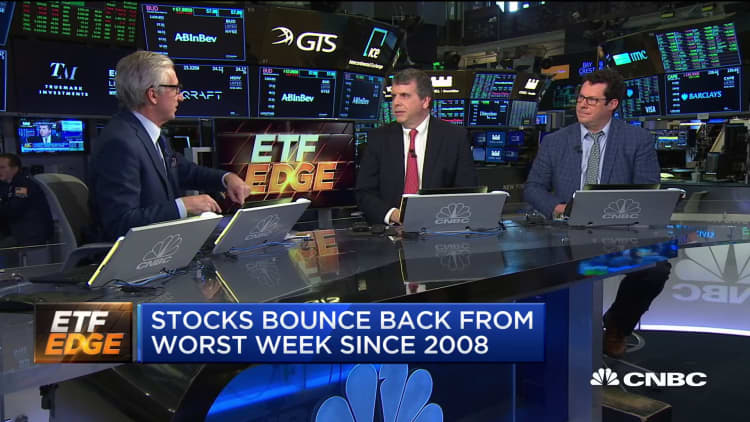A measure of fear in stocks just topped the levels during the financial crisis more than a decade ago.
The Cboe Volatility Index, known as the VIX, surged nearly 25 points, or almost 43%, to close at a record high of 82.69, surpassing the peak level of 80.74 on Nov. 21 2008. The VIX, which tracks the 30-day implied volatility of the S&P 500, more than doubled in March alone. The index looks at prices of options on the S&P 500 to track the level of fear on Wall Street.
"It's now apparent that we're in the depths of the Covid-19 financial crisis of 2020, with much left to be written," Jon Hill, BMO's rates strategist, said in a note on Monday.
Stocks suffered a brutal sell-off Monday with the Dow Jones Industrial Average tanking nearly 3,000 points, posting its worst day since the "Black Monday" market crash in 1987. The S&P 500 dropped 12%, — hitting its lowest level since December 2018.
Investors have been dumping stocks amid intensifying fears that the fast-spreading coronavirus would disrupt global supply chains and damage the world economy significantly. The market took a turn for the worse right before Monday's close after President Donald Trump said the worst of the outbreak could last until August. He also said the U.S. "may be" heading into a recession.

Part of the reason for this level of volatility is because there's so much uncertainty around the length of the outbreak and its economic impact, according to Bill Miller, founder of Miller Value Partners.
"It reflects the uncertainty and potential impact of that range of outcomes," Miller said in a note Monday. "When the market thinks the authorities don't get it ... the market reflects that immediately. When it believes proactive measures are being taken — Trump's remarks [Friday] — that is quickly evident in the market's reaction."
Trump on Friday declared a national emergency and detailed plans to battle the outbreak, including ramped-up testing.
Monday's bloodbath came even after the Federal Reserve's emergency move to ease lending aggressively. The central bank on Sunday shockingly cut rates by 125 basis points to a target range of 0% to 0.25% and launched a massive $700 billion quantitative easing program to offset the negative impact from the coronavirus.
Subscribe to CNBC PRO for exclusive insights and analysis, and live business day programming from around the world.


